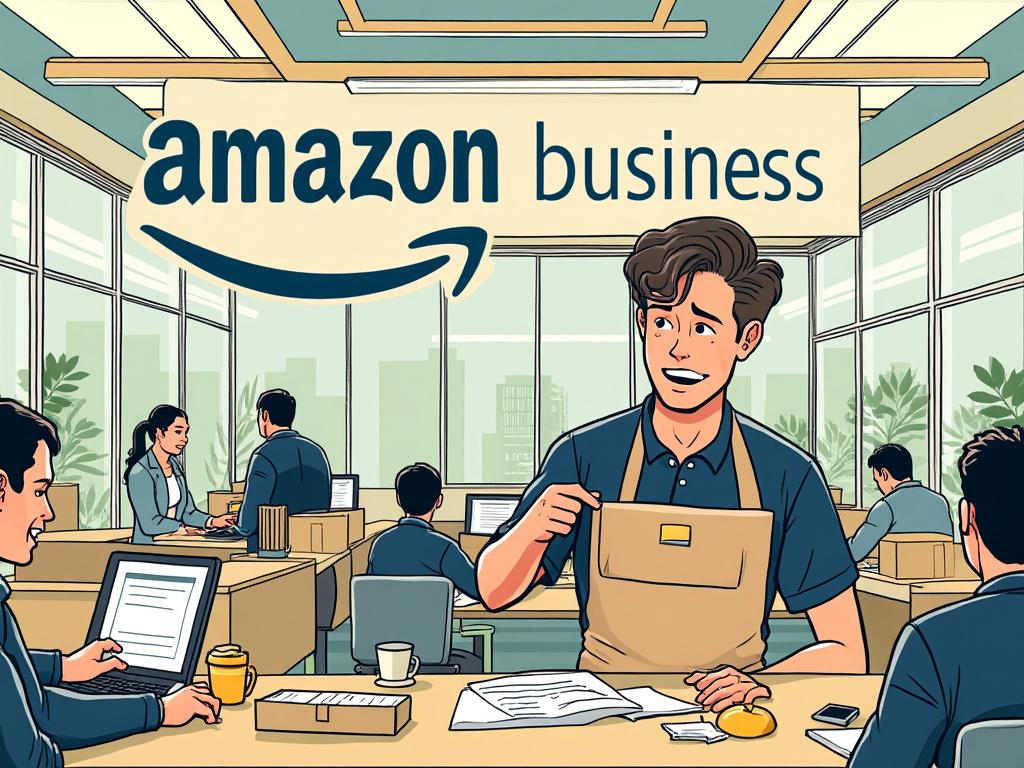
How to Start a Business on Amazon: A Comprehensive Guide for Beginners
**Reading time: 12 minutes**
Table of Contents
- Why Start Selling on Amazon?
- Getting Started: Preparation Steps
- Choosing Your Amazon Business Model
- Conducting Product Research
- Sourcing Your Products
- Creating Your Amazon Seller Account
- Listing Your Products on Amazon
- Pricing Your Products
- Selecting a Fulfillment Method
- Marketing Your Products
- Monitoring Your Business Performance
- Scaling Your Business
- Common Challenges and Solutions
- Frequently Asked Questions
- Your Amazon Success Roadmap
Why Start Selling on Amazon?
Ever wondered why millions of entrepreneurs choose Amazon as their launchpad? The numbers speak volumes: Amazon generates over **$574 billion** in annual revenue and hosts more than **9.7 million sellers** worldwide. But here’s the compelling part—this massive marketplace isn’t just for corporate giants.
Consider Sarah Martinez, a former teacher who started selling handmade jewelry on Amazon in 2022. Within 18 months, her side hustle generated $85,000 in revenue. What made her success possible? Amazon’s unparalleled reach and built-in infrastructure.
**Key advantages of selling on Amazon:**
• **Instant credibility** through Amazon’s trusted brand
• **Access to 300+ million active customers** globally
• **Built-in payment processing** and customer service
• **Scalable fulfillment options** that grow with your business
• **Advanced analytics** to optimize your performance
The platform eliminates traditional barriers to entry. You don’t need a physical storefront, extensive marketing budget, or complex logistics network. Amazon provides the foundation—you bring the products and strategy.
Getting Started: Preparation Steps
Success on Amazon isn’t about luck—it’s about strategic preparation. Before diving in, establish your business foundation with these critical steps.
**Essential preparation checklist:**
1. **Research your market thoroughly** using tools like Google Trends and Amazon Best Sellers
2. **Set realistic financial expectations** with a minimum $2,000-5,000 startup budget
3. **Understand tax implications** and register your business entity
4. **Secure necessary permits** based on your product category
5. **Create a dedicated workspace** for inventory management
**Pro tip:** The most successful Amazon sellers treat this as a legitimate business from day one, not a casual side project. This mindset shift determines long-term success rates.
Choosing Your Amazon Business Model
Your business model shapes everything from startup costs to profit margins. Let’s examine the three primary approaches:
Retail Arbitrage
This involves purchasing discounted products from retail stores and reselling them on Amazon at market price. **Startup cost: $500-2,000**. Perfect for beginners but time-intensive and harder to scale.
Private Labeling
You source generic products, add your branding, and sell them as your own brand. **Startup cost: $3,000-10,000**. Higher risk but significantly better profit margins and scalability potential.
Wholesale
Purchase products directly from manufacturers or distributors at wholesale prices. **Startup cost: $2,000-15,000**. Requires established relationships but offers consistent inventory flow.
**Business Model Comparison:**
| Model | Startup Cost | Profit Margin | Scalability | Time Investment |
|---|---|---|---|---|
| Retail Arbitrage | $500-2,000 | 15-25% | Low | High |
| Private Label | $3,000-10,000 | 30-50% | High | Medium |
| Wholesale | $2,000-15,000 | 20-35% | Medium | Low |
| Dropshipping | $200-1,000 | 10-20% | Medium | Medium |
Conducting Product Research
Product research separates profitable sellers from struggling ones. The key isn’t finding the “perfect” product—it’s identifying opportunities with favorable market conditions.
**The Golden Criteria:**
• Monthly sales volume of 300+ units
• Competition with fewer than 100 reviews
• Price point between $15-50
• Profit margin potential of 30%+
• Lightweight and durable for shipping
Using Tools for Product Research
**AMZScout** and **Jungle Scout** dominate the product research space, but don’t overlook free alternatives. Start with Amazon’s own Best Sellers lists and trending categories.
**Manual research process:**
1. Browse Amazon categories related to your interests
2. Identify products with 4+ star ratings but fewer than 500 reviews
3. Calculate potential profit using Amazon’s FBA calculator
4. Verify demand using Google Keyword Planner
5. Assess competition strength and differentiation opportunities
Case study: Mike Thompson discovered camping gear had consistent demand but noticed most products lacked proper weatherproofing details in their listings. He sourced improved versions and captured 15% market share within six months.
Sourcing Your Products
Reliable sourcing determines your business sustainability. **Alibaba** remains the go-to platform for international suppliers, while **Thomasnet** serves domestic sourcing needs.
**Supplier evaluation checklist:**
• Minimum 2 years in business with verified credentials
• Sample quality meets your standards
• Communication responsiveness within 24 hours
• Production capacity exceeds your projected needs
• Quality control processes documented
**Negotiation strategies:**
Start with smaller orders to test quality and reliability. Most suppliers offer better pricing at 500+ unit quantities, but don’t commit large volumes initially.
Creating Your Amazon Seller Account
Choose between Individual ($0.99 per sale) or Professional ($39.99/month) plans. Professional accounts provide access to advertising tools and bulk listing features—essential for serious sellers.
**Required documentation:**
• Valid government-issued ID
• Bank account and routing information
• Tax identification number
• Credit card for account verification
• Phone number for two-factor authentication
Listing Your Products on Amazon
Your product listing is your digital storefront. Amazon’s A9 algorithm prioritizes listings that convert browsers into buyers.
Optimizing Your Listings
**Title optimization formula:**
Brand + Product Type + Key Features + Size/Quantity + Color/Style
**Example:** “EcoClean Bamboo Kitchen Utensil Set – 6-Piece Natural Wood Cooking Tools with Storage Container”
**Bullet points strategy:**
• Lead with your strongest benefit
• Include specific measurements and materials
• Address common customer concerns
• Highlight unique features competitors lack
• End with a compelling reason to buy today
**Backend keywords:** Use all 250 characters with relevant search terms customers might use but don’t appear in your visible listing.
Pricing Your Products
Pricing strategy balances competitiveness with profitability. The “race to the bottom” mentality destroys margins—focus on value differentiation instead.
**Pricing psychology insights:**
• Prices ending in .99 increase conversion by 12%
• Premium positioning often outperforms low-price strategies
• Bundle pricing can increase average order value by 35%
**Dynamic pricing approach:** Monitor competitor pricing weekly and adjust strategically, not reactively. Tools like **RepricerExpress** automate this process while maintaining profit thresholds.
Selecting a Fulfillment Method
**Fulfilled by Amazon (FBA)** vs **Fulfilled by Merchant (FBM)** impacts everything from customer trust to profit margins.
**FBA Advantages:**
• Prime eligibility increases conversion rates by 25%
• Amazon handles customer service and returns
• Multi-channel fulfillment capabilities
• Higher search ranking priority
**FBM Advantages:**
• Lower fees for high-value, low-weight items
• Complete control over packaging and branding
• Direct customer relationship building
• Flexibility in shipping methods
**Revenue Impact Visualization:**
FBA vs FBM Revenue Comparison (Monthly)
Marketing Your Products
Organic ranking takes time—strategic advertising accelerates visibility and sales velocity.
Utilizing Amazon Advertising
**Sponsored Products** campaigns should start with automatic targeting to gather keyword data, then transition to manual campaigns with high-performing terms.
**Campaign structure for beginners:**
1. **Automatic campaign** with $20-30 daily budget
2. **Manual exact match** for proven keywords
3. **Manual broad match** for keyword expansion
4. **Product targeting** for competitor ASINs
**External traffic strategies:**
• Social media content showcasing product benefits
• Influencer partnerships in your niche
• Email list building with Amazon attribution codes
• Pinterest optimization for visual products
Monitoring Your Business Performance
**Amazon Seller Central** provides comprehensive analytics, but focus on metrics that drive profitability:
**Key Performance Indicators:**
• **Session percentage** (aim for 15%+)
• **Buy Box percentage** (target 90%+)
• **Customer lifetime value** (calculate quarterly)
• **Return on ad spend** (maintain 4:1 minimum)
• **Inventory velocity** (turns per month)
Weekly performance reviews prevent small issues from becoming major problems. Set up automated alerts for inventory levels and performance metric changes.
Scaling Your Business
Scaling requires systematic expansion, not random product additions. Successful sellers focus on three growth levers:
**1. Product Line Extension:** Add complementary products to existing successful categories
**2. Market Expansion:** Launch in additional Amazon marketplaces (Canada, UK, Germany)
**3. Channel Diversification:** Expand to Walmart, eBay, or your own website
**Amazon Brand Registry** unlocks enhanced brand protection and marketing tools essential for scaling. Requirements include active trademark registration and brand consistency across listings.
Common Challenges and Solutions
**Challenge 1: Account Suspension**
**Solution:** Maintain detailed records of all transactions, respond promptly to Amazon communications, and never manipulate reviews or rankings.
**Challenge 2: Inventory Management**
**Solution:** Use inventory forecasting tools and maintain 60-90 days of stock to avoid stockouts while minimizing storage fees.
**Challenge 3: Increasing Competition**
**Solution:** Focus on brand building and customer experience rather than price competition. Develop unique product features competitors can’t easily replicate.
Frequently Asked Questions
How much money do I need to start selling on Amazon?
The minimum realistic budget ranges from $2,000-5,000 for private label products, including inventory, Amazon fees, and initial advertising spend. Retail arbitrage can start with $500-1,000, but scaling potential is limited.
How long does it take to see profits on Amazon?
Most sellers see their first sales within 2-4 weeks of launching, but consistent profitability typically takes 3-6 months. The timeline depends on product selection, competition levels, and advertising effectiveness.
Can I sell on Amazon without FBA?
Yes, Fulfilled by Merchant (FBM) is viable, especially for large, expensive, or fragile items. However, FBA provides significant advantages including Prime eligibility and higher search visibility that often justify the additional costs.
Your Amazon Success Roadmap
**Your next 30 days should follow this strategic sequence:**
**Week 1-2: Foundation Building**
• Complete market research using free and paid tools
• Validate 3-5 product ideas through demand analysis
• Register your business entity and obtain necessary permits
• Set up business banking and accounting systems
**Week 3-4: Execution Phase**
• Contact suppliers and order samples
• Create Amazon Seller account and complete verification
• Develop your brand identity and product packaging
• Prepare launch marketing materials and keyword lists
**Month 2-3: Launch and Optimize**
• List your first products with optimized content
• Launch PPC campaigns starting with automatic targeting
• Monitor performance metrics daily and adjust strategies
• Gather customer feedback and iterate on product improvements
The Amazon marketplace rewards sellers who combine strategic thinking with consistent execution. Your success isn’t determined by finding the “perfect” product—it’s built through systematic testing, optimization, and scaling of proven opportunities.
**What specific product category aligns with your interests and market knowledge?** Start there, because passion combined with market demand creates the foundation for sustainable Amazon success. The entrepreneurs thriving on Amazon today aren’t necessarily the smartest or most well-funded—they’re the ones who started with strategic preparation and maintained consistent effort through the inevitable challenges ahead.

Article reviewed by Emma van der Berg, Sustainability Analyst | Researching Green Energy Projects, on June 16, 2025
